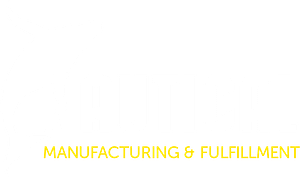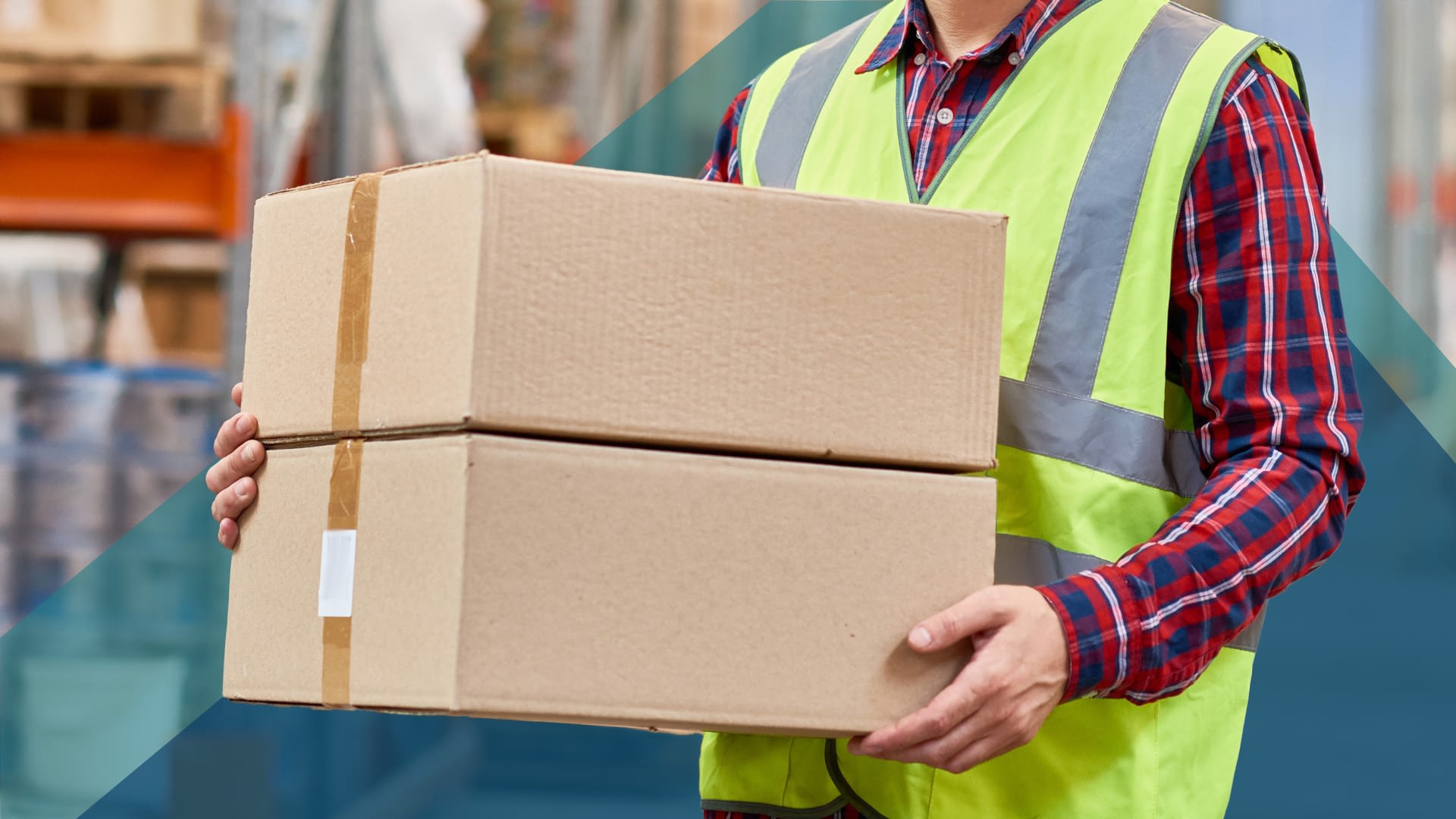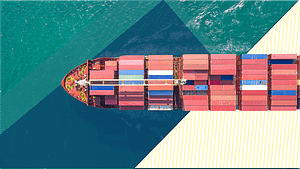Warehouses and fulfillment centers serve similar supply chain purposes, but each provides a distinguishable set of functions essential to the industry. At its core, the difference between them can be easily summarized: warehouses primarily focus on storing goods, fulfillment centers are geared towards efficiently processing orders and shipping products to customers. Digging deeper, though, there are a host of characteristics that separate these two pillars of the supply chain.
The Key Difference Between a Warehouse and a Fulfillment Center
The primary difference between the two types of facilities comes down to the goods being stored in them, how long they remain at the facility, and where their next destination lies.
Warehouses. Warehouses are storage facilities where goods are stored before being distributed. They are often used for bulk storage and inventory management. Warehouses typically focus on storing products efficiently and may not have the infrastructure or processes optimized for order processing and shipment.
These storage facilities can accommodate a diverse range of goods, from consumer products to industrial materials. Their versatility allows businesses to store inventory securely until needed, contributing to the efficiency of supply chains across various industries. Despite their seemingly passive role, warehouses play a crucial part in the logistics process, providing a stable environment for goods, ensuring they remain intact and readily accessible when demand arises.
Fulfillment Centers. Fulfillment centers are specialized facilities designed for order fulfillment. They not only store inventory but also handle picking, packing, and shipping of products directly to customers. Fulfillment centers are usually equipped with advanced technology and automation systems to streamline the order fulfillment process, allowing for faster and more efficient processing of orders.
A fulfillment center is all about efficiently getting orders processed and shipped out quickly. While they do include storage space like warehouses, their focus is on short-term storage rather than long-term. Acting as a crucial link between manufacturers and customers, fulfillment centers handle tasks such as order fulfillment, packaging, labeling, and shipping.
One key distinction between a fulfillment center and a warehouse lies in how they generate revenue. While a warehouse makes money by storing goods over time, a fulfillment center thrives by turning inventory over (moving it in, through the facility, and out the door to a new destination).
Distribution Center (DC): Distribution centers share characteristics with both warehouses and fulfillment centers, but they are specialized facilities designed for efficient distribution within the supply chain. They manage inventory like warehouses but also play a role in order processing and distribution, similar to fulfillment centers, albeit on a larger scale.
In a way, a distribution center (DC) can be considered a mix between a warehouse and a fulfillment center. A distribution center is a facility designed for the efficient distribution of goods to various destinations, which could include retail stores, wholesalers, or other distribution centers. DCs focus on receiving, sorting, and storing inventory in preparation for outbound shipment. They often serve as hubs in the supply chain, consolidating products from multiple sources before redistributing them to their final destinations.
Is a 3PL a Warehouse or a Fulfillment Center?
Both! A 3PL (Third-Party Logistics) provider can offer both warehouse and fulfillment center services, but it depends on the specific capabilities and services a 3PL offers.
Warehouse Services: Some 3PL providers primarily focus on warehousing services. They offer storage solutions for their clients’ goods, managing inventory, and providing distribution services. These warehouses may not have the advanced order processing capabilities of a fulfillment center but are crucial for storing goods in bulk and managing inventory efficiently.
Fulfillment Services: Other 3PL providers specialize in fulfillment services. They operate fulfillment centers that handle the entire order fulfillment process, including receiving, picking, packing, and shipping individual orders directly to customers. These fulfillment centers are equipped with advanced technology and automation systems to optimize order processing and ensure efficient delivery.
Some 3PL providers offer both warehousing and fulfillment services, allowing clients to store their inventory in warehouses and utilize fulfillment center services for order processing and shipping. In such cases, they act as comprehensive logistics partners, providing end-to-end solutions for their clients’ supply chain needs.
What Services Are Provided At A Fulfillment Center?
Fulfillment centers offer a range of services aimed at efficiently processing and fulfilling customer orders for e-commerce businesses and other direct-to-consumer sales channels.. However, there are some providers that are focused on a specific subset of storage and fulfillment like cold storage, medical devices, or bulky items. Here are some general service areas that most fulfillment centers provide to clients:
- Receiving and Inventory Management
- Receiving incoming shipments from suppliers or manufacturers.
- Unloading, checking, and storing inventory in designated locations within the fulfillment center.
- Inventory tracking and management using barcode or RFID systems to ensure accurate stock levels.
- Cross-docking: Cross-docking is a logistics strategy where products from inbound shipments are directly transferred from receiving docks to outbound shipping docks with minimal or no storage time in between.
- Order Processing:
- Receiving customer orders electronically through integrated systems or platforms.
- Order picking: Retrieving items from inventory based on customer orders. Orders can be picked using batch pick, zone pick, wave pick, discrete pick, or pick & pack methods.
- Order packing: Packaging items securely and appropriately for shipment, often using standardized packaging materials.
- Pick & Pack and Order consolidation: Combining multiple items from the same order into a single shipment, if applicable.
- Shipping and Delivery:
- Integrating with shipping carriers (e.g., UPS, FedEx, USPS) to generate shipping labels and arrange for package pickup.
- Providing various shipping options to customers, such as standard, expedited, or same-day delivery.
- Tracking shipments and providing customers with tracking information to monitor the status of their orders.
- Returns Processing:
- Handling returns and exchanges initiated by customers.
- Inspecting returned items for damage or defects and determining their disposition (e.g., restocking, refurbishing, or disposing of them).
- Updating inventory records and processing refunds or exchanges as needed.
- Value-added Services:
- Customization: Personalizing products or packaging according to customer preferences (e.g., adding gift messages, branding, or special packaging).
- Kitting and assembly: Combining multiple items into kits or bundles before shipping.
- Labeling and barcoding: Applying custom labels or barcodes to products for specific requirements or compliance purposes.
- Quality control: Inspecting products for quality and accuracy before shipment to ensure customer satisfaction.
Benefits Of Outsourcing To A Fulfillment Provider
Fulfillment providers add value for businesses through the expertise and cost savings they provide. They allow businesses an affordable means to expand operation while lessening risk. Here are some additional ways fulfillment centers can help a company grow.
- They Have Access To Advanced Warehousing & Fulfillment Technology: Fulfillment centers leverage advanced technologies such as warehouse management systems (WMS), automated picking systems, and RFID tracking to optimize operations and improve efficiency. These technologies enable faster order processing, accurate inventory tracking, and real-time visibility into stock levels. By outsourcing fulfillment, businesses gain access to cutting-edge technology without the capital investment required for in-house implementation.
- They Provide Geographic Expansion and Market Reach: Fulfillment providers often have multiple distribution centers strategically located across different regions or countries. By partnering with a global fulfillment network, businesses can expand their geographic reach, enter new markets, and reach customers more efficiently. Fulfillment centers offer local fulfillment capabilities, faster shipping options, and reduced transit times, enabling businesses to compete effectively in diverse markets and deliver a superior customer experience.
- They Help Reduce Risk And Ensure Compliance: Fulfillment providers assume responsibility for mitigating risks associated with order fulfillment, including inventory loss, damage, theft, and shipping errors. They implement robust security measures, quality controls, and insurance policies to protect valuable inventory and ensure regulatory compliance. By outsourcing fulfillment, businesses can mitigate operational risks, enhance supply chain resilience, and focus on strategic risk management initiatives.
How Nautical Provides The Perfect Order Fulfillment Experience
At Nautical Manufacturing & Fulfillment, we specialize in providing order fulfillment solutions for businesses across diverse industries. With our dedicated team of logistics experts, we offer end-to-end fulfillment services tailored to your specific needs. Whether you’re a small e-commerce startup or a multinational corporation, we can help you streamline your supply chain, reduce costs, and delight your customers with fast, reliable service. Partner with us for your fulfillment needs and experience the difference of premier order fulfillment.
Frequently Asked Questions – Order Fulfillment
Is A Fulfillment Center The Same As A Warehouse?
While both fulfillment centers and warehouses are storage facilities for goods, they serve different purposes in the supply chain process. A warehouse is primarily used for storing goods. It typically involves receiving, storing, and organizing inventory. On the other hand, a fulfillment center is a more dynamic facility that not only stores inventory but also processes orders for shipping directly to customers.
How Do Fulfillment Centers Make Money?
Fulfillment centers generate revenue by charging businesses for various services, including storage fees for housing inventory, order fulfillment fees for picking, packing, and shipping orders, shipping fees for handling delivery, additional services like kitting and returns processing, and technology fees for access to management software.
Do Fulfillment Centers Provide 2-Day Shipping?
Many fulfillment centers offer expedited shipping options such as 2-day shipping as part of their services. However, it will depend on several factors like location, order processing times, and partnerships with carriers. These will determine whether specific fulfillment centers can offer these shipping options to their clients.
What Are Fulfillment Services?
Fulfillment services handle the storage, processing, and shipping of orders for businesses. These services include inventory management, order processing, packing, and shipping.




